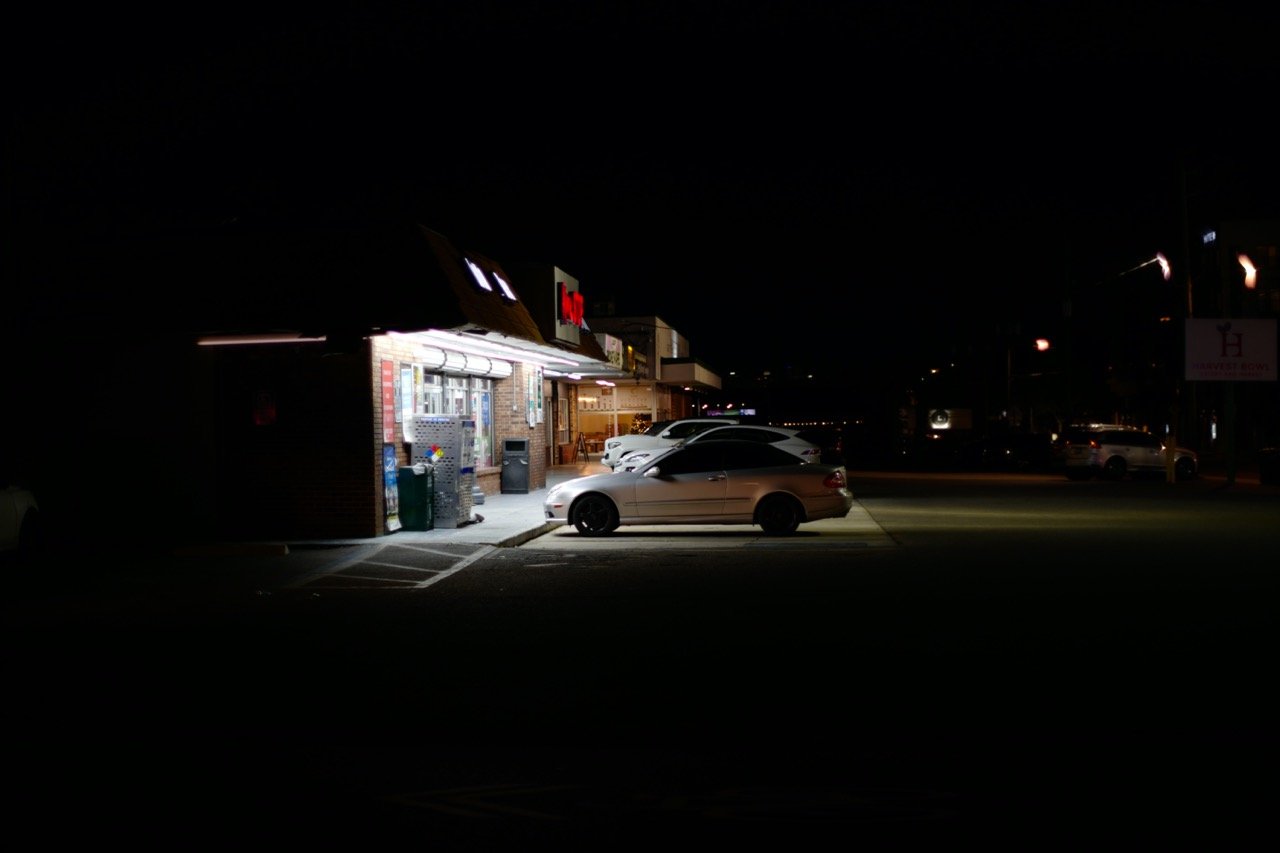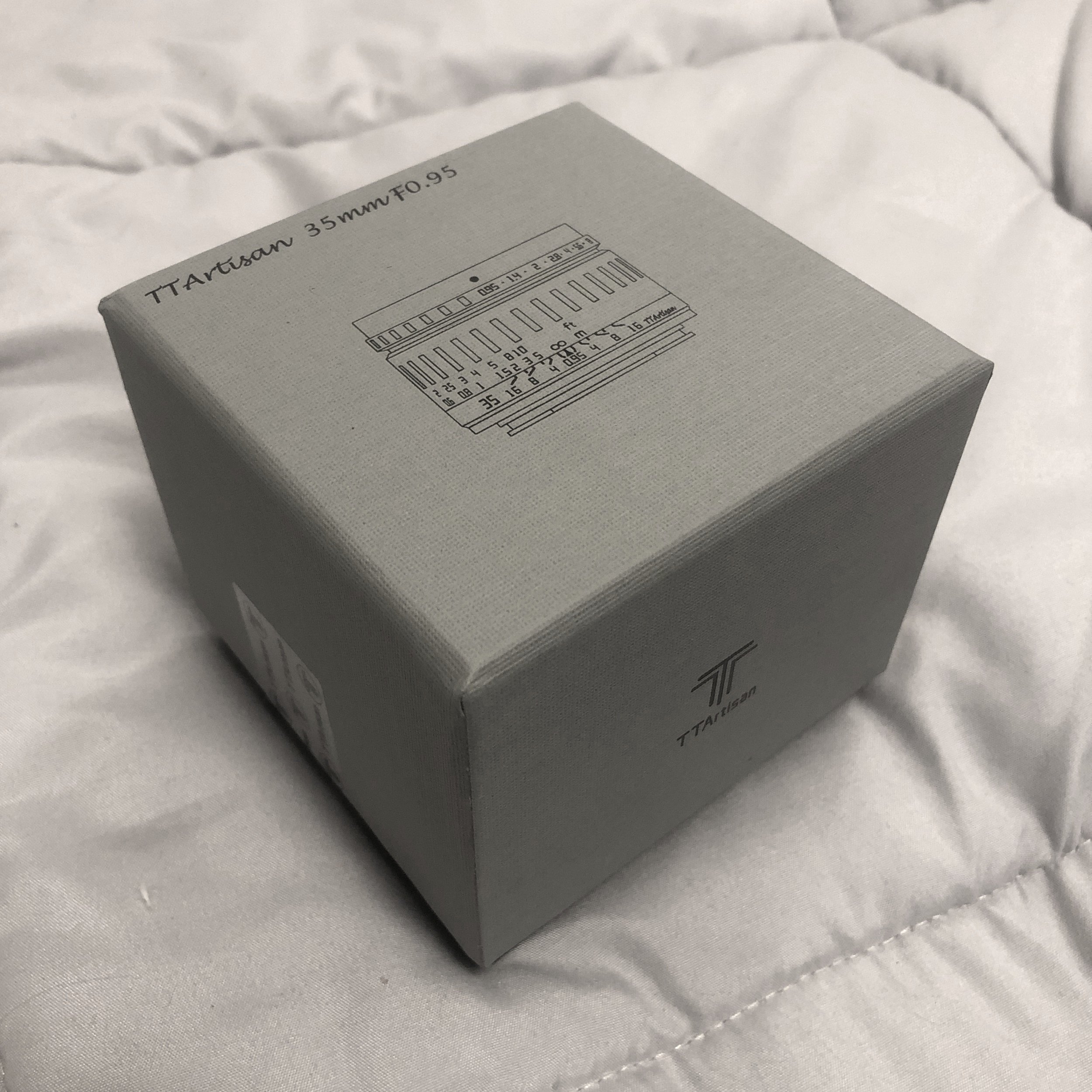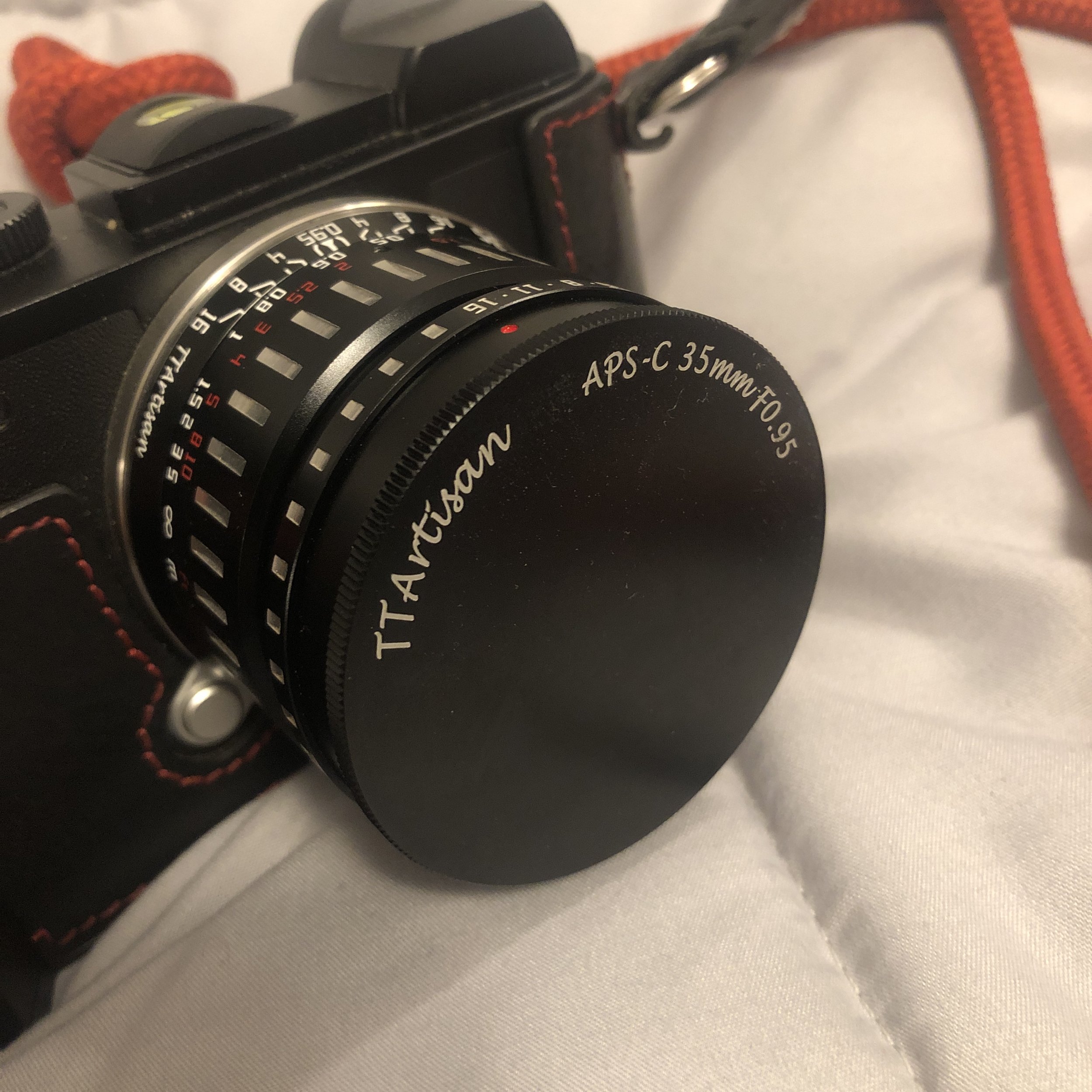Ok, yall. This has been in the works for a few weeks now and I am finally ready to publish it.
The short answer… it is totally worth the money if you like manual glass.
The long answer… read on.
Handheld at f0.95 at night shutter speed is 1/80 second. The image is nice and sharp.
Shot at f8 with the focus trap method.
This little lens is a wonder of modern engineering with how they kept the size so small and also kept the optics so clear at the same time. I unboxed this lens and noticed immediately the packaging is top tier, reminiscent of the iPhone styling but in a nice grey/cloth texture for the cover with the lens nomenclature clearly on the top of the box. If the box is a clue to the lens quality then this is going to be a real winner! (Spoiler: It is)
It is no secret that I like to shoot 50mm on my full frame cameras like my Leica SL2 and the 35mm is about as close as it gets on APSC, so I shoot a lot with 35mm on my Leica CL when I am out just shooting street for me. So when TTArtisan reached out to me and asked if I would like to take a look at this beast, I quickly agreed and they sent me a lens.
Now for the whole disclosure part: They(TTArtisan) did give me the lens for free. They also told me that they had no “rules” they wanted me to follow or anything at all to be honest. They just said that if they liked my review that they would like to have permission to share it on their social media. Which I also though was a great idea. So I am free to say what ever I want as I come to this review. With all that said, let’s get started.
I deliberately wanted to shoot with it for a few weeks before rendering judgement as this will allow the “honeymoon” phase of getting something new to wear off a little and I can be more objective in the review for you guys. I have shot a variety of subject matter with it and have come away loving this lens immensely. It only has a couple of things that I dont like all that much and they really are not deal breakers.
Shot at f0.95 in the dark… hand held and manually focused on the bottles.
What do I like about this lens?
Well for starters… THE APERTURE GOES TO f0.95!!! You just have to love some fast glass and this little guy has it, and then some! At one point I stopped down to f4 for a photo that needed some depth of field and realized I had stopped down 4 1/3 stops to do this! That is lunacy! I am just blown away that they can pack that much aperture into such a small package. Speaking of aperture, the aperture blades are nice and round but when stopped down it still produces some glorious sun stars!
The light stars are pretty epic in my book. (I love light stars though)
Stopped down to f16 & 12 second exposure, for this extreme example.
The double bladed one on the left is because there are two bulbs in the street light.
The physical appearance of the lens is really nice. It has a 52mm filter thread. The text is Leica styled with deep, clean engraved characters throughout (yes, the text, all of it, is engraved into the lens pretty deep, it will not wear off…ever) and painted really well for ease of reading. The external controls are easy to find and use. The focus throw is just right, there is a good amount of dampening in the focus barrel and it is smooth. The aperture detents are not like the other two lenses I have from them. My other two lenses are smaller than this one (the 35mm f1.4 and the 17mm f1.4) so there might not be room for a very strong aperture detent system in them, but on this little guy, the detents are perfect. They even have a nice little click as they slip from one detent to the next. I was so happy to see this issue I have with the other lenses, to be resolved in the new lens. This lens contains zero electronics of any kind so the semi-conductor shortage shouldn’t affect your ability to get your hands on one of these little guys. This is also part of the reason it is so small, there isn’t need to make room for a focus motor or any other electronics.
The lens cap is one of their signature solid metal threaded lens cap that screws on to the filter threads, this is good as it protects the lens glass AND the filter threads at the same time. Even so, I do not prefer them and the only real reason is the time to deploy the camera is much longer as it takes some time to remove the lens cap. On top of that, I can never seem to get them to go back on easily, it takes me a couple of tries every time to get the cap back on. Is there a trick to this I am not aware of? Leave me a comment if you have a trick on the lens cap, I need it!
Now, if I was worth two pennies, I would just remove the lens cap before I start shooting and then reinstall it when done…and this is exactly what I do most of the time. We have gotten spoiled to the quick deploy “pinch” style caps, so can I really call this a detractor? The level of protection these caps brings is unmatched by anything made of plastic so there is that to consider…
Shot at f0.95 in the daytime. This car was moving… Shutter speed is 1/400 sec.
The next thing that I noticed is how nice the images are coming out of this lens. The guys over at TTArtisan have really done their homework here as most super fast glass is in one of two categories…crazy expensive or not great image quality wide open. These guys seem to have broken through that glass ceiling (see what I did there? LOL) and have brought us a super fast lens, with really nice image quality, for really, really reasonable money. I dare say that these little lenses they sell are under priced and once they figure it out, the price will go up, so you better get your copy now.
So is there anything I DONT like about this lens?
The grip area on the aperture ring and the focus ring are not knurled (which is what I would have preferred) but instead is a mill cut series of notches. Now, I come from a machine shop background and understand the reasoning for this past the aesthetic look of the lens. These are easier to make, faster to make, more consistent when run at speed, and are less abusive on the machine to make as well. Knurling is one of the highest strain operations on an engine lathe/turning center and if not flooded with copious amounts of coolant or oil, the little tools that make the diamonds will clog up and destroy the part quite easily. By milling the shallow notches it was a simple mill op repeated a number of times, as the part is indexed a few degrees between cuts. This makes manufacturing VERY fast and produces beautiful results…that just don’t feel as good to me. Because I am accustomed to the rough texture of the knurled rings and these are not like that. That is not to say that they don’t work, quite the opposite, they work really well actually, but may post a problem with gloves into the winter. But now I am splitting hairs, so let’s look at some photos!
f0.95 basically in the dark with the shutter speed at 1/400sec.
Some notes about shooting with this lens. It is easy to use for street photos and the such when stopped down. It is not as easy when wide open… The reason is because all large aperture lenses have super shallow depth of field when shot wide open, well f0.95 is so wide open that you have to take a few shots as the subject will move in and out of focus pretty easily. Don’t just shoot one and call it done, it is probably out of focus… lol. I laughed here, but it probably is out of focus… It is the nature of fast glass with manual focus. I am not bothered by this, but some people are, so if you need tack sharp on the first try, then maybe you should buy the native autofocus glass for your brand of camera.
With the previous said, it seems that the more you practice doing it, the easier it gets to get sharp photos. I guess practice does matter… lol. Another thing to remember is that since the lens has no electronics, there is no meta data nor is there anything to help meter, other than the newer mirrorless machines can meter off the sensor, and the only mode of operation on the camera is manual mode. I can get away with automatic ISO as the camera meters off of the sensor in my Leica CL so it doesn’t need the lens to know the metering, but you might need to keep this in mind on your camera. The lens also comes in a plethora of mounting solutions so it should be able to be installed on pretty much any APSC camera out there, just check their website HERE for more info about it.
So there you have it, another wonderful little lens from the fine folks over at TTArtisan and I am not surprised to be honest, they have come on the scene and are taking over the 3rd party lens market by storm. Hope you have a wonderful day and get your camera out and go take some photos with it!










